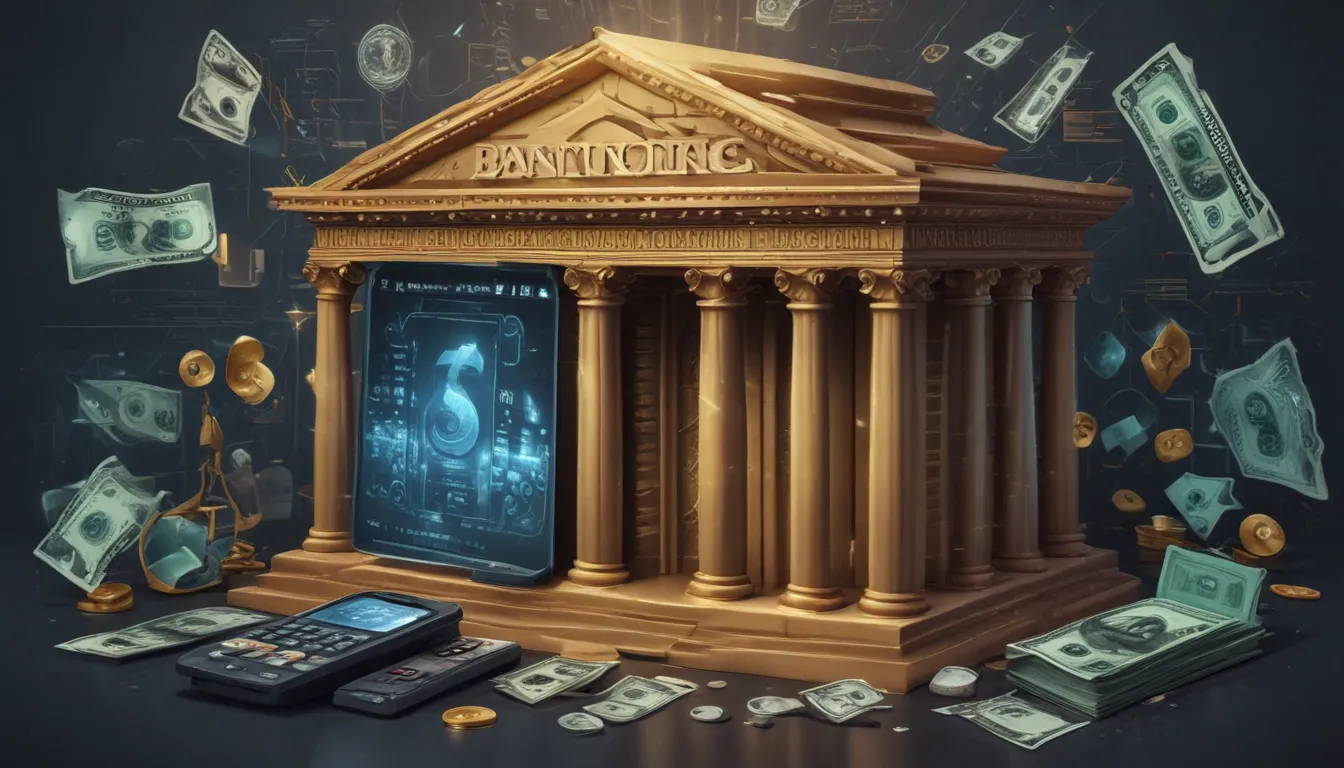A Note About Images: The images used in our articles are for illustration purposes only and may not exactly match the content. They are meant to engage readers, but the text should be relied upon for accurate information.
In today’s fast-paced world, banking technology plays a crucial role in how we manage our finances, making transactions quicker, safer, and more convenient than ever before. From mobile banking apps to blockchain technology, the advancements in banking tech have reshaped the financial industry. This post will uncover 20 intriguing facts about banking technology, providing valuable insights into how technology is changing the way we bank.
Evolution of Banking Technology
Banking technology has come a long way, evolving from simple bookkeeping to sophisticated digital platforms. This transformation has not only changed how banks operate but also how customers interact with their financial institutions.
- Early Beginnings: The introduction of the telegraph in the 19th century was a notable advancement in banking technology, allowing for faster communication of financial information.
- ATMs: Automated Teller Machines (ATMs) revolutionized banking in the 1960s, providing customers with the ability to perform transactions without the need for a bank teller.
- Online Banking: The rise of online banking in the 1990s enabled customers to manage their accounts from the comfort of their homes.
Impact of Mobile Banking
Mobile banking has become an essential part of our daily lives with the advent of smartphones, allowing users to access banking services anytime and anywhere, enhancing convenience and efficiency.
- App-based Services: Most banks now offer mobile apps that allow users to check balances, transfer money, and even apply for loans with just a few taps.
- Mobile Payments: Services like Apple Pay and Google Wallet have made it possible to make purchases using smartphones, reducing the need for physical credit cards.
Security Enhancements in Banking
As banking technology advances, robust security measures are essential to protect sensitive financial information. Banks have implemented various technologies to safeguard their systems and their customers’ data.
- Encryption: Financial institutions use encryption to secure online transactions and protect information from hackers.
- Biometric Verification: Many banks have introduced biometric verification methods, such as fingerprint and facial recognition, to enhance security and reduce fraud.
The Rise of Blockchain in Banking
Blockchain technology is set to revolutionize the banking sector by offering a secure and efficient way to process transactions.
- Decentralization: Blockchain operates on a decentralized network, making it more secure and transparent than traditional banking systems.
- Smart Contracts: Self-executing contracts with terms directly written into lines of code reduce the need for intermediaries and lower transaction costs.
Artificial Intelligence and Machine Learning
Artificial intelligence (AI) and machine learning play a crucial role in transforming banking services, making them more personalized and efficient.
- Chatbots: AI-powered chatbots are used by banks to provide 24/7 customer service, answering queries and offering financial advice.
- Fraud Detection: Machine learning algorithms analyze patterns in banking transactions to detect and prevent fraudulent activities more effectively.
Future Trends in Banking Technology
Looking ahead, several emerging technologies are poised to further transform the banking industry.
- Quantum Computing: This technology promises to process data at unprecedented speeds, potentially revolutionizing how banks manage and analyze financial information.
- Internet of Things (IoT): IoT devices can provide real-time data on customer behavior, enabling more personalized and efficient services.
- Open Banking: Allowing third-party developers to build applications and services around financial institutions fosters innovation and competition.
- Digital Currencies: Central banks exploring issuing their own digital currencies could change the global finance landscape.
- Voice-Activated Banking: Voice assistants like Amazon Alexa and Google Assistant make voice-activated banking more prevalent, offering a hands-free way to manage finances.
- Robotic Process Automation (RPA): Automating routine tasks like data entry and compliance checks improves efficiency and reduces errors.
- Augmented Reality (AR) and Virtual Reality (VR): These technologies offer immersive banking experiences and tools for financial planning.
- Sustainable Banking Practices: Banks are adopting green technologies and practices to reduce their carbon footprint and promote environmental sustainability.
- Financial Inclusion: Advances in banking technology extend financial services to underserved populations, improving access to banking and credit facilities.
A Final Look at Banking Tech
Banking technology has truly transformed how we manage our finances, making transactions faster, more secure, and incredibly convenient. From the rise of mobile banking to blockchain and cryptocurrencies, these advancements have reshaped the financial landscape. Artificial intelligence and machine learning are essential tools used by banks to detect fraud, personalize services, and streamline operations. The future of banking is digital, with fintech companies challenging traditional banks to innovate or be left behind. Staying informed about these changes is crucial for making the most of your financial decisions. Keep an eye on the latest trends and technologies in banking to stay ahead in this ever-evolving sector.
Explore with Us
Our commitment to delivering reliable and engaging content drives our mission. Each fact on our site is contributed by real users like you, bringing a wealth of diverse insights and information. Trust in our dedication to quality and authenticity as you explore and learn with us.






